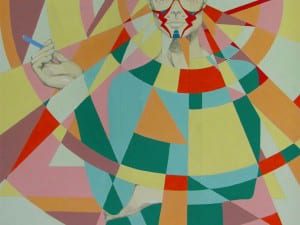Design is everywhere. It forms an essential part of contemporary society. The Design Awards 2008 offered a means for understanding the contemporary world, and demonstrated a huge field of creativity and diversity.
In all its forms, from furniture to graphics, and architecture to industrial, design provides a record that we were here, and tells the story of our existence. However, design is often taken for granted. It’s easy to think of design in terms of architecture, fashion or graphic, but some of the most interesting design concepts are part of everyday existence, such as products, and even transport.
In today’s world, design represents many things, from notions of progress and technology to mass consumerism and globalisation. With more and more “stuff” available, the disposable nature of products is certainly worrying. One of the challenges of designers today is to create designs that support sustainability, yet engage with space and excite viewers. For design, it is truly an exciting time.
This year The Design Museum, the world’s leading museum devoted to contemporary design, has teamed up with Brit Insurance to launch an exciting new annual exhibition and award. The forerunner of the Design Museum, the Boilerhouse was established twenty-five years ago in the basement of the Victoria and Albert Museum (V&A) in London. The Boilerhouse quickly outgrew the V&A and in 1989 it moved on to become the Design Museum, in an architecturally striking transformation of a Thameside warehouse near Tower Bridge. Since then the Design Museum has emerged as an institution with international status and significance, playing an essential part in making design and architecture a part of the cultural agenda.
Deyan Sudjic, Director of the Design Museum says, “I think it’s important that we have a focus every year to look at new works for the museum. The award scheme works in a couple of ways; to bring into the museum 100 fascinating things, ranging from hard-edged industrial design to the more emotional aspects, such as mavericks like the extensions of the congestion charge, which is taking design in the broadest sense, how the action may engineer an entire city. One aspect of the exhibition is to focus on creating a public event, as well as appreciation of the range of what design is, as well as creating a debate and discussion about what are the many meanings of design.“
The exhibition and awards celebrate the most innovative and progressive international design over the past year. A team of internationally respected design experts including Nick Knight, Philipp Rode and Wayne Hemingway nominated the finalists; the comprehensive shortlist reflects the best designs of the last 12 months. Selecting the shortlist is certainly a massive task, Sudjic says, “It depends on selecting the selectors; we’ve gone to more than 50 experts and enthusiasts spotted across the world and asked them to tell us what they think. The curators have blended and cooked the results to produce what we hope is a sharp, acute survey of what is there.”
The award and exhibition spans seven categories to cover all design disciplines: Architecture, Graphics, Fashion, Product, Furniture, Interactive and Transport. Deyan explains, “There is a famous text written by an Italian architect, Ernesto Rogers, which he wrote in the 1950s, he suggested if you look at a spoon carefully enough you can understand the kind of city that the culture would create. I think that you learn much about London by a plastic spoon on a British Airways flight, on the other hand it does show that design is some kind of DNA that runs its threads though many different categories, of course architecture is not the same as product design, but there are enough parallels to make putting them side by side mean something.”
Design is fascinating, but also tough to pin down, in that it is both an aspect of our cultural and our economic lives. Sudjic says, “Design is a cultural expression but also used to sell more stuff. We’re at a time when there has never been more stuff than there is now, in some ways it’s deeply worrying. We consume more and more, products last less and less and time, one wonders if design is complicit in that or is challenging it. Design is maturing. It’s relatively modern, it’s been around since the Industrial Revolution, and it’s facing up to a challenging period. ”
The shortlist of 100 designs opened at the Design Museum on 13 February. Designs range from Thomas Heatherwick’s East Beach Café, to SANAA’s New Museum, New York; United Visual Artists’ Volume; with sound by Onepointsix (3D installation at the V&A) to the Fiat 500 and JCDecaux’s Velib Communal Bicycles, Paris.
Sudjic enthuses, “We want to excite audiences: to put in one place the diversity of what design is, to set a market, to help look us look at what we might be collecting at the future, and to put design at the centre of the cultural agenda. It’s very large and ambitious. I think that Britain in general, and London in particular, is a world focus for designers. Talented designers from around the world tend to congregate here. It’s the subject of our times. We hope that in ten or twenty years time, we can look back and say that was the thread of our times. ”
The winners were announced on 12 March 2008, they are: The Beijing National Stadium by Herzog & De Meuron, Penguin Classics Deluxe Edition, Meyra-Ortopedia’s Mex-x wheelchair for kids, One Laptop per child by Yves Béhar of Fuseproject, Airborne Autumn/Winter 07 by Hussein Chalayan and Martino Gamper’s 100 Chairs in 100 Days.
The exhibition ran until 27 April 2008. www.designmuseum.org.
Cherie Federico





